Property Sold to Benefit The Yorkshire Sculpture Park Joan Miró Follow Jeune Fille au Long Cou signed and numbered 'Miró 3/6' on the back bronze with a bronze and light grey-green patina 64.3 x 17 x 14.5 cm (25 3/8 x 6 3/4 x 5 3/4 in.) Conceived in 1981 and cast in 1986, this work is number 3 from an edition of 6.
Provenance Courtesy of the Successió Miró Exhibited Palma de Mallorca, Pelaires Centre Cultural Contemporani, Lluna Miró: Un Segle, 1993, pp. 36-37 (another example exhibited and illustrated) Søllerød, Gammel Holtegaard Museum, Mallorca fra Miró til i dag , 1995, p. 37 (another example exhibited and illustrated) London, Simon Dickinson Ltd., Eight Sculptures by Joan Miró 29 January - 1 April 2015 Wakefield, Yorkshire Sculpture Park, Miró: Sculptor, 17 March 2012 – 6 January 2013, pp. 96, 158 (another example exhibited and illustrated, p. 97) Literature Pere A. Serra, 101 escultures a la Valle de Sóller, Palma de Majorca, 1995, p. 81 (another example illustrated) Franco Basile, Joan Miró Bologne, 1997, p. 223 (another example illustrated) Emilio Fernández Miró & Pilar Ortega Chapel, Joan Miró Sculptures. Catalogue raisonné 1928 - 1982 , Le Coudray, 2006, no. 377, p. 350 (another example illustrated) Joan Punyet Miró and Joan Gardy Artigas Ceramics, 1941 - 1983, Catalogue Raisonné (ceramic version) Catalogue Essay In the 1940’s, following a major retrospective of his work, Joan Miró embarked on a perennial journey of sculptural discovery, which would grow to become as prominent and important to Miró’s artistic oeuvre as his paintings. Miró’s exploration into the tangible realm of sculpture enabled him to expand beyond the confines of the two-dimensional picture plane, such that he could finally construct, and truly immerse himself in, a mystical world beyond the limitations of the canvas, a seemingly natural progression for the artist. The present works are three-dimensional representations of the recurring oneiric forms that lurk amongst the artist’s paintings. Miró’s incorporation of these archetypal themes and figures within his sculpture - namely the familiar tear-drop shaped negative space of Femme sur la place d’un cimetière , and Maternité’s unmistakable abstract figuration of the female form - confirms that, perhaps subconsciously, his paintings constitute the foundation of his distinctive sculptural language. The Catalan artist recognised an organic evolution in his sculptural development: ‘my vocabulary of forms… did not come to me all at once. It formulated itself almost in spite of me’ (Joan Miró quoted in Peter Murray CBE, 'Miró: Sculptor at Yorkshire Sculpture Park', Miró: Sculptor , West Bretton, 2012, p. 5). The preliminary sketches and earlier ceramic casts of the present works were produced, in some cases, decades before the bronze sculptures were created, and with each piece narrating Miró’s innovative, meticulous yet unconventional approach to sculpture-making, the works are more than purely idiosyncratic compositions: each character reveals elements of the whimsical world that Miró envisaged. Miró’s sculptures demonstrate the inextricable influence of his fellow Surrealists, and artists within the Dada movement, on his own artistic outcomes. Much like Marcel Duchamp’s readymades and the assemblages associated with the Dada artist’s, Miró’s sculptures are bronze casts of figures born of quotidian objects and materials, encouraging a comprehensible and inclusive dialogue between the artist and any viewer, while simultaneously capturing the energy of each object. Read More
Property Sold to Benefit The Yorkshire Sculpture Park Joan Miró Follow Jeune Fille au Long Cou signed and numbered 'Miró 3/6' on the back bronze with a bronze and light grey-green patina 64.3 x 17 x 14.5 cm (25 3/8 x 6 3/4 x 5 3/4 in.) Conceived in 1981 and cast in 1986, this work is number 3 from an edition of 6.
Provenance Courtesy of the Successió Miró Exhibited Palma de Mallorca, Pelaires Centre Cultural Contemporani, Lluna Miró: Un Segle, 1993, pp. 36-37 (another example exhibited and illustrated) Søllerød, Gammel Holtegaard Museum, Mallorca fra Miró til i dag , 1995, p. 37 (another example exhibited and illustrated) London, Simon Dickinson Ltd., Eight Sculptures by Joan Miró 29 January - 1 April 2015 Wakefield, Yorkshire Sculpture Park, Miró: Sculptor, 17 March 2012 – 6 January 2013, pp. 96, 158 (another example exhibited and illustrated, p. 97) Literature Pere A. Serra, 101 escultures a la Valle de Sóller, Palma de Majorca, 1995, p. 81 (another example illustrated) Franco Basile, Joan Miró Bologne, 1997, p. 223 (another example illustrated) Emilio Fernández Miró & Pilar Ortega Chapel, Joan Miró Sculptures. Catalogue raisonné 1928 - 1982 , Le Coudray, 2006, no. 377, p. 350 (another example illustrated) Joan Punyet Miró and Joan Gardy Artigas Ceramics, 1941 - 1983, Catalogue Raisonné (ceramic version) Catalogue Essay In the 1940’s, following a major retrospective of his work, Joan Miró embarked on a perennial journey of sculptural discovery, which would grow to become as prominent and important to Miró’s artistic oeuvre as his paintings. Miró’s exploration into the tangible realm of sculpture enabled him to expand beyond the confines of the two-dimensional picture plane, such that he could finally construct, and truly immerse himself in, a mystical world beyond the limitations of the canvas, a seemingly natural progression for the artist. The present works are three-dimensional representations of the recurring oneiric forms that lurk amongst the artist’s paintings. Miró’s incorporation of these archetypal themes and figures within his sculpture - namely the familiar tear-drop shaped negative space of Femme sur la place d’un cimetière , and Maternité’s unmistakable abstract figuration of the female form - confirms that, perhaps subconsciously, his paintings constitute the foundation of his distinctive sculptural language. The Catalan artist recognised an organic evolution in his sculptural development: ‘my vocabulary of forms… did not come to me all at once. It formulated itself almost in spite of me’ (Joan Miró quoted in Peter Murray CBE, 'Miró: Sculptor at Yorkshire Sculpture Park', Miró: Sculptor , West Bretton, 2012, p. 5). The preliminary sketches and earlier ceramic casts of the present works were produced, in some cases, decades before the bronze sculptures were created, and with each piece narrating Miró’s innovative, meticulous yet unconventional approach to sculpture-making, the works are more than purely idiosyncratic compositions: each character reveals elements of the whimsical world that Miró envisaged. Miró’s sculptures demonstrate the inextricable influence of his fellow Surrealists, and artists within the Dada movement, on his own artistic outcomes. Much like Marcel Duchamp’s readymades and the assemblages associated with the Dada artist’s, Miró’s sculptures are bronze casts of figures born of quotidian objects and materials, encouraging a comprehensible and inclusive dialogue between the artist and any viewer, while simultaneously capturing the energy of each object. Read More
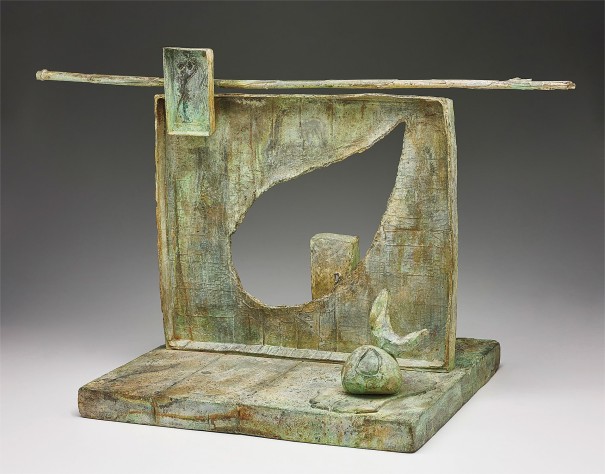
.jpg)
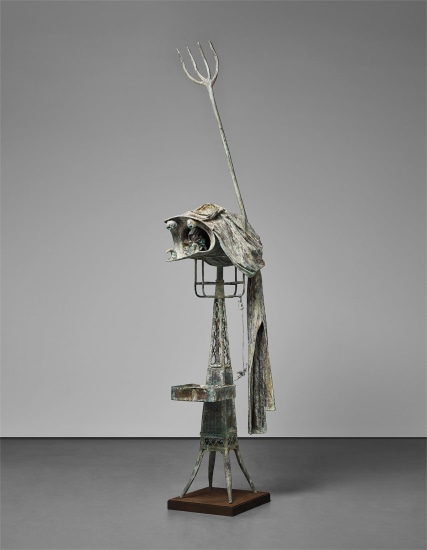
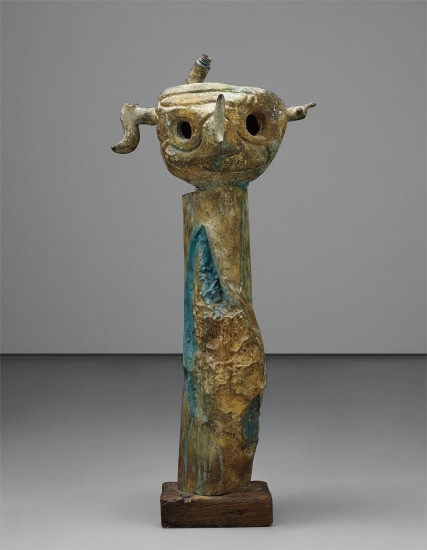




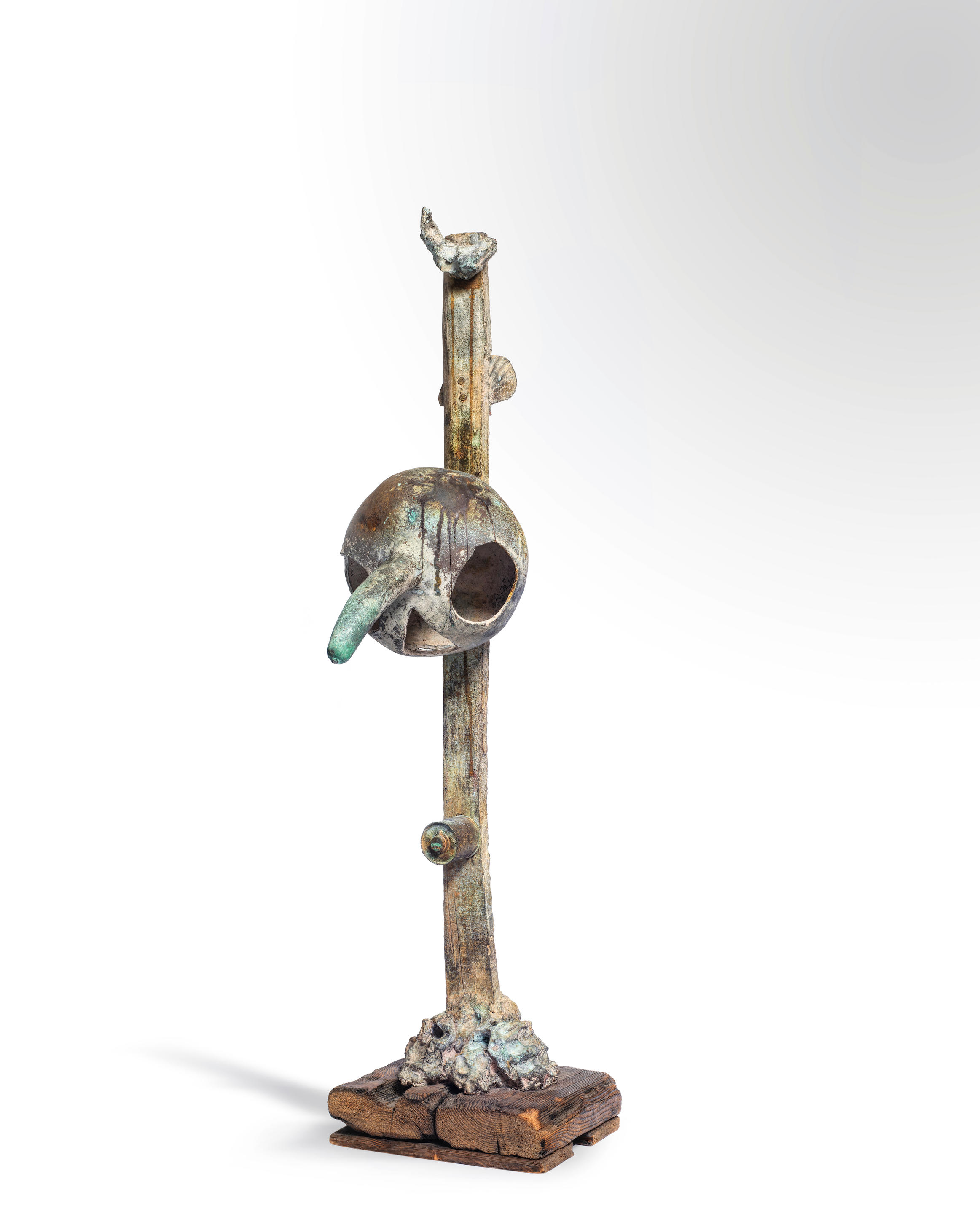
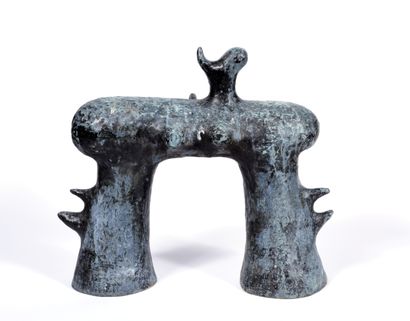



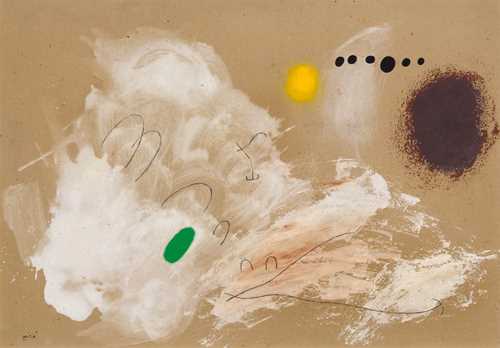

Testen Sie LotSearch und seine Premium-Features 7 Tage - ohne Kosten!
Lassen Sie sich automatisch über neue Objekte in kommenden Auktionen benachrichtigen.
Suchauftrag anlegen